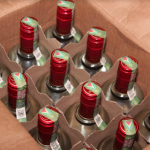
The Cradle to Cradle (C2C) model is among initiatives being advanced by the Environmental Protection Agency (EPA) to address plastic and other forms of pollution, according to the EPA Executive Director, Dr Kemraj Parsram.
C2C focuses on creating products and systems with the goal of eliminating waste and promoting circularity. According to Dr. Parsram, the C2C model forms part of the circular economy policy that is embedded in Guyana’s Low Carbon Development Strategy 2030.
“Waste isn’t a thing, and it shouldn’t be a thing. There is value in every product that we develop. And there is a principle called, under the same circular economy, a principle of cradle to cradle, rather than cradle to grave, rather than take, make and dispose or pollute, we can take, make, reuse and recycle, and keep it into perpetuity. For example, in the biological cycle, you can have products, your shoe soles for example, you can make it with products that eventually, if you walk in the forest and as it degrades, it goes back to nature. So, it is a product that is nature based, like wood,” Dr Kemraj Parsram said.
The EPA Executive Director spoke to reporters on the sidelines of the EPA’s Green Theatre Production – an event held at the National Cultural Centre to commemorate World Environment Day 2025 under the theme “Ending Plastic Pollution.”
The Green Theatre Production is one of the initiatives being advanced by the EPA that is intended to bring attention to issue of pollution and its devastating impact on the environment. The production targets school children.
Dr Parsram said it is no secret that Guyana, like other parts of the world, has a garbage pollution problem. He said the effects of plastic pollution are devastating and it is time Guyanese change their attitude.

“Plastic by itself is not a problem. It is how we dispose of it, how we treat with it, and that is where the problem [lies], that results in plastic pollution. Once we dispose of it inappropriately that ends of being plastic pollution. It harms the environment, the fishes, the marine mammals, the wildlife in general, and it looks terribly for our environment. So, the EPA, this green theatre is one means of educating, and we are starting with our school children, and hopefully, that will then transfer to their parents, to their uncles, and aunts, to their community, and eventually all of Guyana,” he said.
As part of the awareness programme, heavy focus will be placed on the Kingston Seawall – a population recreational area – that is often left polluted, particularly on weekends or after holidays.
Dr Parsram said the EPA will soon meet with key stakeholders including the Ministry of Public Works and the Georgetown Mayor and City Council to devise a strategy to tackle pollution in the area.
He said the intention is to determine the root causes and address them.













You must be logged in to post a comment Login